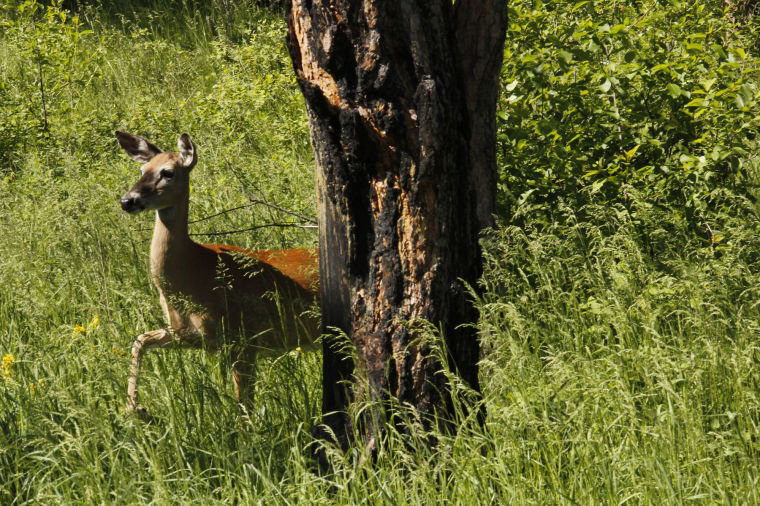
Hughes and Sully Counties were not spared. A total of 140 deer were found dead in Hughes County, while 85 were found in Sully County, said Andy Lindbloom, senior big game biologist.
"We definitely got closer to 2012 than we would have liked," Lindbloom said.
The state issued about 29,000 resident licenses this year. It also issued about 42,000 individual tags, a 33 percent increase from last year.
Lindbloom said that about 1,500 licenses were returned as of Monday afternoon. Hunters with licenses for the muzzleloader deer season have until the end of this week to send their tags in for a refund.
Lindbloom said the disease is spread by biting midges that breed in shallow, stagnant water. That can lead to outbreaks being very localized, he said. Because the disease is often so localized hunting opportunities can vary greatly from one piece of land to another.
EHD is most devastating to whitetail deer populations. While the disease can and does affect mule deer, it doesn't seem to kill as many.
There is a more indiscriminate killer in the state, however. It's called Chronic Wasting Disease and it's much newer to South Dakota. Lindbloom said that CWD is primarily confined to far western South Dakota and the Black Hills.
Less is known about CWD than EHD. And while EHD can decimate deer populations, it tends to run in cycles and generally stops spreading after a hard freeze. Deer populations in the south have even been known to develop an immunity to EHD, Lindbloom said.
Outbreaks of CWD are much more difficult to diagnose and there is no treatment. The disease spreads from deer to deer without need of a vector such as a biting fly or midge, so it doesn't peter out after a hard freeze.
"There's still a lot to be learned about CWD," Lindbloom said.
The Wind Cave National Park elk herd is being thinned out by sharpshooters this year in an effort partially aimed at controlling the disease. Lindbloom said the GFP's strategy for CWD also is controlling its spread.
Both CWD and EHD, as well as their impact on the deer herd, will factor into the GFP deer management plan currently being assembled. What effect EHD had on deer harvest rates this year won't be known until about March, Lindbloom said. Once all the deer seasons are over, hunters will be surveyed on their success.
The deer management plan should be ready to be opened for public comment by mid-spring, Lindbloom said.
The department also will be setting deer season dates and deciding on the number of licenses to issue in the spring and early summer. Licenses issued for the new year will be dependent on factors which include fawn-to-doe ratios, aerial surveys, survival rates and harvest success. The seasons for both 2017 and 2018 will be set next year.



Reader Comments